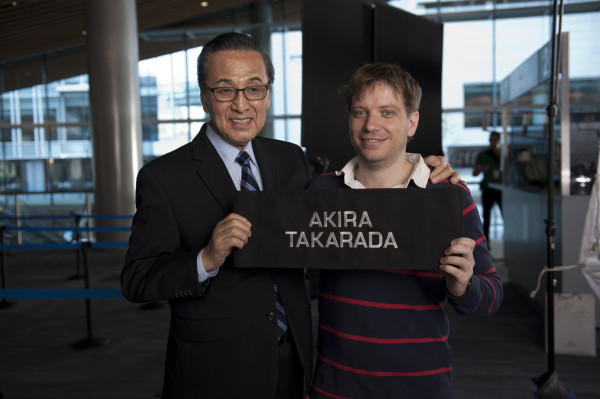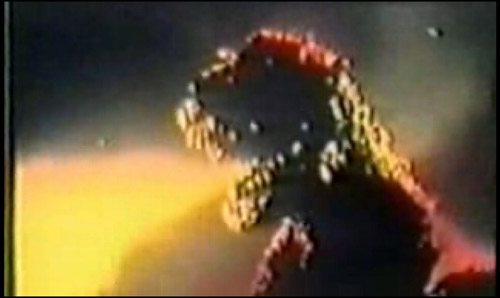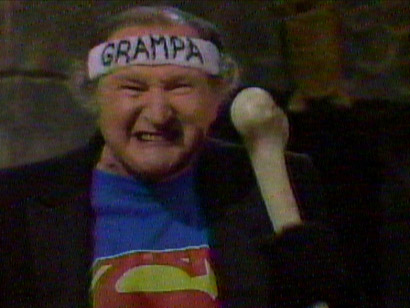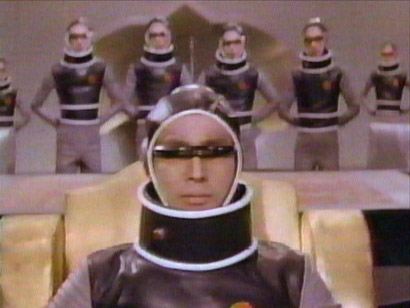Ironfinger 2: Golden Eye
aka 100発100中 黄金の眼 aka Hyappatsu hyakuchu: Ogon on me aka 100 Shot, 100 Killed: Golden Eye aka Booted Babe, Busted Boss

1968![]()
Written by Jun Fukuda, Ei Ogawa, and Michio Tsuzuki
Directed by Jun Fukuda

Ironfinger 2: Golden Eye returns to the world of Ironfinger. We have international criminals, jet setting fun, and a hero who is invincible kicking butt. As usual, the title changed for overseas export. 100 Shot, 100 Killed: Golden Eye became Ironfinger 2: Golden Eye, though in some locales it was turned into Booted Babe, Busted Boss! Those poor saps… The “Golden Eye” of the title betrays more of the Bond influence, for the few who couldn’t figure it out from the Ironfinger part, or for the Japanese audience. This is the last outing of Andrew Hoshino, so cry your tears now and then read all about it.

The tone is slightly altered in that Andrew Hoshino’s organization is hinted to be more criminal in nature, though Andrew himself is given a few more noble things to do. He’s pulled in under the story of avenging the murder of a Japanese citizen upon request of his young daughter. It turns into a quest to find the missing rare Samanta Gold coin, though that is just part of a bigger economic criminal conspiracy.
Golden Eye features world locations,Besides Japan, the opening of the film is in Beirut! This may seem amazing to modern audiences that anyone would spend time in Beirut, but things weren’t always the way they are now. Another thing Ironfinger 2 has is sheiks in blackface (also seen in Yellow Line). The characters are played by Japanese actors, but are painted up dark brown and treated as if they’re foreign. Both a good police officer and several of the villains feature this treatment. Also both of the Ironfinger films feature big boss villains who are Caucasian, though both are European in origin. I would guess this is to show both that the Japanese hero can defeat anyone in the world, including what would be considered traditional Bond villains, and that Japanese people can’t be the big villain because they aren’t evil, and it’s people outside their culture affecting their life.
A highlight of these Ironfinger films is the killer 1960s clothing. Every outfit Bibari Maeda wears is spectacular. The cool clothes help make the fun lifestyle easier to accept, as they’re dressed just like cool people, so they would naturally do cool things.

Andrew Hoshino has a pair of women to deal with, though his darker affiliation is reveal again as bad girl Ruby is who he is paired with the most, Mistuko Saito functions as a catalyst to get the plot to the various locations, but she’s far too busy being a star to drop everything to run around with a playboy spy. Freelance bad girl Ruby easily slips into this role, her various connections with Andrew happening frequently
The far more complicated plot deals with economic problems of late 1960s Japan, hidden treasure, and even a hint of environmentalism thrown in. The whole thing hinges on a missing rare gold coin, but the real crime is wholesale precious metals smuggling used to hold hostage parts of Japan’s economy. It seems like it should be a modern film, the economic battle having played out in a modified form in real life. Golden Eye thankfully just uses that as backdrop and keeps the focus on the missing rare coin, giving audiences who don’t understand complex economic issues something to follow, while those who are aware have an insight into why the villains have so many high powered goons.

|









































